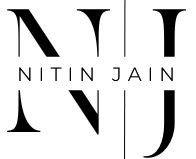Understanding crawl budget and its importance in SEO
Although the crawl budget is an intangible piece of data, Google nonetheless uses it effectively on your website. By using some very easy methods that we will outline for you in this article, you can optimize this on your website.
Google must first crawl a page in order for it to show up in search results and bring visitors to your website.
Not all pages will be crawled, though, as Google does not have unlimited time or resources to do so. Optimizing this “crawl budget” can be crucial for the success of your SEO campaign.
What is the budget for the crawl? (Definition)
The crawl budget determines how many pages from your website GoogleBot (Google’s crawler) can crawl in a specific amount of time.
The crawl budget of a site is determined by Google based on a variety of factors (a non-exhaustive list), including the site’s size, “health,” loading speed, content quality, and frequency of updates.
- The distinction between a crawl budget and a crawl rate limit
The maximum creep The “crawl rate limit” is a distinct but crucial component of the crawl budget that enables you to specify the quantity of concurrent connections used by GoogleBot to crawl a website as well as the amount of time that should pass between each page that is crawled.
The “crawl rate limit” idea was developed to stop Google from rapidly crawling a large number of pages on your website. As a result, it stops Google robots from making too many queries, which could overload your server and slow down your site’s loading time.
The crawl rate cap can be configured in the Google Search Console. Setting a high restriction, however, does not ensure a fast crawl rate.
Why should the crawl budget be optimized?
You want new pages and updates to existing pages to be found and indexed as soon as possible.
Google bots won’t be able to crawl them successfully if you spend your crawl budget. To the detriment of your site’s strategic pages, they will waste time on inconsequential pages.
Therefore, wasting the crawl budget can reduce your SEO effectiveness.
- How do I determine the crawl budget for my site?
Budget for crawling in the Google Search Console
You can see a summary of the Google crawl budget for your website if it links to the Google Search Console.
Take these actions:
Select a website after logging into Google Search Console.
Open Settings and choose Crawl Stats. When you open the report, you’ll find a summary page with a crawl trend graph, host status information, and a list of crawl requests broken down by response, file type, purpose, and Googlebot type.
Examine the server logs for your budget.
Checking your server logs to observe how frequently Google crawlers pass through (hit) the pages of your site is highly informative. Comparing these statistics to those displayed in Google Search Console is intriguing. To be as accurate as possible, it is always best to rely on multiple sources.
- How may the crawl budget be maximized while preventing waste?
The following are the most crucial factors to take into account in order to optimize your crawl budget:
When using the robots.txt file, make sure to block any unneeded directories or url parameters that could result in a huge number of pointless pages and squander crawl money.
Improve the speed at which your page loads by choosing a reputable host and a powerful server, as well as by optimizing the HTML, JS, CSS, and image resources that are called when a page loads.
Have an optimum tree structure (depth of the site) by selecting a tree structure that limits pages that are too deep (available from the home page in three clicks or more) and that enables you to prevent issues with cannibalization and duplication.
Improve internal links by making sure they lead to the most pertinent pages and that they load quickly in 200.
Reduce the quantity of soft 404 error pages by identifying and then fixing them using certain technologies (like Google Search Console).
Identify the pages that are not connected to the rest of the website (no internal links to these pages) to reduce the number of orphan pages.
Limit content duplication by recognizing sites with identical content that are accessible via different urls or pages with comparable content that run the danger of competing with one another (the soft 404 risk).
Update your website frequently with high-quality material by keeping track of how well your pages are performing and making sure that they contain original and relevant content.
Limit the number of redirects (and avoid redirect loops in particular) because too many redirects and/or loops might negatively impact Googlebots and your crawl budget.
Sitemap.xml, SEO page structure, and SEO structured data are additional indirect factors that should be optimized.
- Which KPIs should you adhere to when following your crawl budget?
The following important indicators will help you manage and maximize your exploration budget:
how many pages there are in the structure
How many pages are indexed?
The length of your pages on average
duplicate content rate
Crawling frequency of significant pages
Core Web Vitals and Essential Web Signals’ typical loading time
- Case study: How does crawling affect the SEO performance of a website?
The average crawl budget from September through October was 6,000 pages per day, as can be seen here.
We noticed an increase in the number of pages crawled each day (8000 pages per day) after commencing to perform SEO adjustments at the beginning of October (the most significant of which was the de-indexing of a significant number of duplicate pages on the site). When you consider the effect it may have on the SEO performance of your pages, it is not insignificant.
The graph shows the evolution of clicks over a period of three months, and it is clear that clicks began to rise in tandem with an increase in the number of pages Google began to crawl after a little over a month of the duplicate pages being de-indexed.
- Recapitulation
Your success depends on managing and optimizing your crawl budget. You should constantly consider optimizing your web pages (internal link structure, writing quality SEO content, pagination, loading speed, etc.) while discussing the Google crawl budget. Additionally, when Google gives your site a better crawl budget, your SEO performance (placement in search results, organic traffic, and potentially your turnover) will improve (in most situations).
Author Profile
- Nitin JainArticles by Nitin Jain
- Nitin Jain is the founder and C.E.O of India PR Distribution - India's top Press Release Distribution and PR Agency. Nitin has more than 20 years of experience in PR, Corporate Communications, Digital Marketing, Branding Strategy and Lead generation.
Latest entries
 Press Release TipsAugust 2, 2023How to Upcycle Content: Creative Ways To Get More Value From your content in 2023
Press Release TipsAugust 2, 2023How to Upcycle Content: Creative Ways To Get More Value From your content in 2023 Digital MarketingAugust 2, 2023Unlock Your Content Potential: A Guide to Repurposing
Digital MarketingAugust 2, 2023Unlock Your Content Potential: A Guide to Repurposing Press releaseAugust 2, 2023Unlock the Benefits of Repurposing: What is Content Repurposing & Does It Work?
Press releaseAugust 2, 2023Unlock the Benefits of Repurposing: What is Content Repurposing & Does It Work? Search OptimizationAugust 2, 2023Leverage Voice Search For Local Biz Success: Tips & Strategies
Search OptimizationAugust 2, 2023Leverage Voice Search For Local Biz Success: Tips & Strategies

